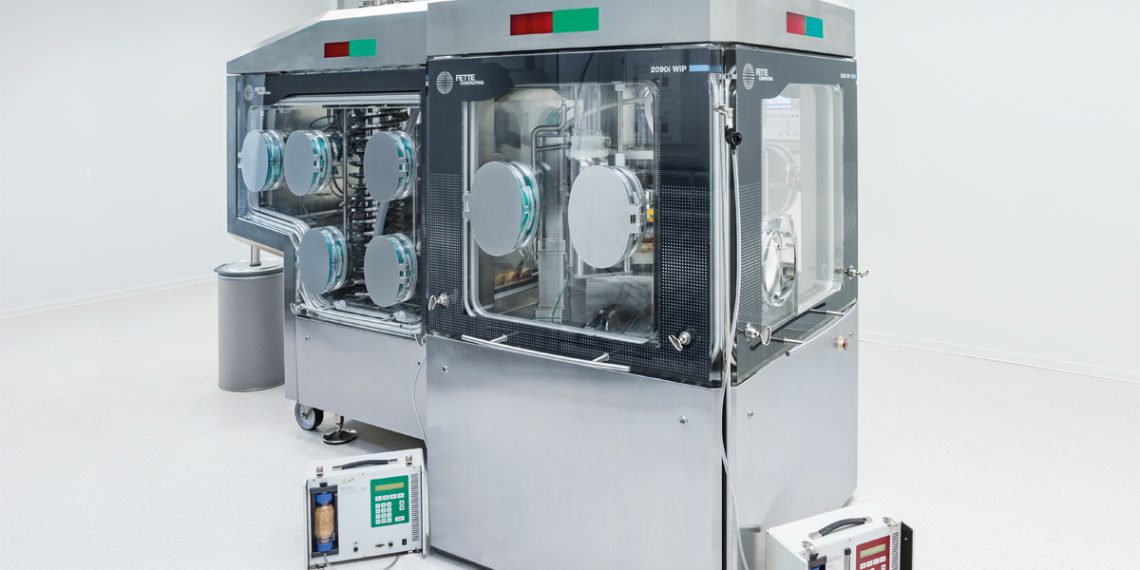The pharmaceutical industry is processing increasingly larger volumes of toxic and highly-active substances, some of which are used in cancer and hormone treatment therapies. This is also accompanied by increased demands on user safety and environmental protection. Pharmaceutical manufacturers are reacting to these technical challenges by using ever more efficient containment solutions.
At the Achema industry fair in Frankfurt am Main, Fette Compacting presented its very own approach for efficient containment in the form of its Containment Guard. Visitors to the trade fair stand will discover how the tableting experts guarantee customized containment for any press using a standardized measurement procedure.
With its Containment Guard, Fette Compacting has developed the first quality certificate for establishing the retention rates of containment tableting systems on the basis of an extremely precise standardized process. The results of these series of tests are used to derive the Containment Guard level. These levels correspond to the OEB levels (Occupational Exposure Band) of the containment pyramid. On this basis, the Containment Guard documents the retention rate of the tested containment press.
Seven steps to the Containment Guard
For exposure measurement during tablet production, the location of the measuring probes and operators during the measurement process is important. Equally important is the number of tablet samples drawn for quality control in the Checkmaster and/or what operating modes and malfunctions are possible for the tablet press. The Containment Guard tests all of this in seven measurement scenarios or “cycles”.
Each test run begins with a zero measurement establishing the basic exposure of the measurement chamber with the test substance. Then the machine works in normal mode for half an hour in order to calculate the retention rate during smooth production. This is followed by simulation of typical work steps: the testeroperators feed tools into the machine, clean the machine interior, dismantle the filling station or remove the machine’s process equipment.
An error test simulates a power failure for determining containment in the event of a fault. This involves initially running the tablet press and the filter unit for five minutes in regular mode before switching them off and allowing the emergency air management system to take over for the next 30 minutes. In order to achieve maximum accuracy of measurement results, each of the seven measurement cycles is repeated three times for each press to be measured.

















